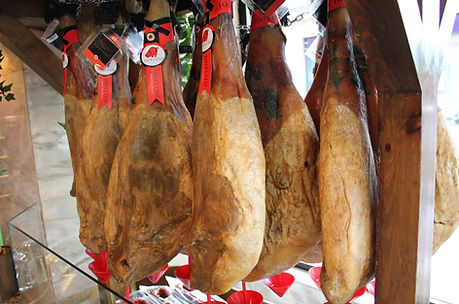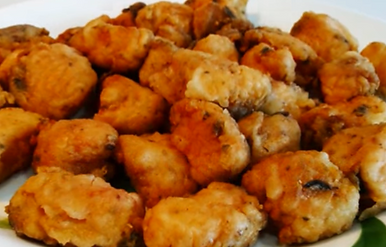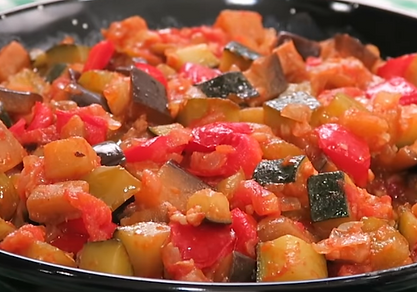top of page

Spanish Food Facts
1. In Spain, the main meal of the day is la comida / el almuerzo in the early afternoon. Typically, it consists of el primer plato - the first course, el segundo plato - the second course, el postre - the dessert, el café - the coffee. On the table there will be el pan - bread, el agua - water and el vino - wine.
Some vocabulary:
el desayuno - the breakfast
el almuerzo - the lunch / the mid-day meal
la cena - the evening meal
la merienda - the snack
la bebida - the drink
el postre - the dessert
la comida - the food / the lunch / the meal
¡Buen provecho! - Enjoy your meal!
2. La paella is one of the most famous dishes of Spain. It originates from the area of Valencia. The traditional paella from this area is called la paella valenciana.
La paella is prepared in a very big pan called la paellera and it is often cooked outside in the open air during picnics and day trips. It is a mixture of rice (el arroz), meat such as chicken (el pollo) or rabbit (el conejo), seafood (los mariscos) and vegetables (las verduras).
The rice of la paella is usually yellow because saffron (el azafrán) is added. El azafrán is a commonly-used spice in Spanish cookery. It produces a very strong dye.



Rice - el arroz - is cultivated in Spain and is a very important part of the Spanish diet. The rice that is used for la paella is called el arroz bomba. It has grains that are quite short and round.
3. La tortilla española, also called la tortilla de patatas is a potato omelette. When you are preparing it, you have to toss the omelette so that it can be cooked on the other side.
The omelette is thick and round. It is normally served in triangular slices, rather like a cake. La tortilla is also used in sandwiches. This sandwich is called el bocadillo de tortilla de patatas.

4. Traditional Spanish desserts are creamy and made with milk such as: el flan - crème caramel, el arroz con leche - rice pudding and las natillas - custard cream.
Often these creamy desserts are flavoured with canela (cinnamon).



5. El chorizo is a traditional pork sausage. It contains garlic and the spice el pimentón (paprika). The paprika gives the sausage an orange/red colour.
El chorizo can be sliced for sandwiches or used in stews, omelette or served on a small plate as a snack called una tapa.

6. A world-famous Spanish ham is el jamón serrano. This actually means 'mountain ham'.
Another type is called el jamón ibérico.
These hams are produced from pigs' hind legs and can be purchased in ready-sliced portions or as a full leg!
This type of ham is not cooked. Instead, it is cured by being hung up and left to dry.
It is sliced very thinly and eaten as an appetiser (una tapa) with bread (el pan).

7. La morcilla is a sausage made from pigs' blood, pork fat, onion, herbs and spices. There are many varieties of la morcilla in Spain.
The version from the area of Burgos contains rice. There is a traditional saying about this variety. It is said that la morcilla de Burgos must be 'sosa, grasosa y picosa' - bland (not salty), greasy and spicy.
La morcilla can be served sliced and fried, in sandwiches or as una tapa.
There is also a sweet version containing sugar and dried fruits. It is called la morcilla dulce.
8. El gazpacho is a soup prepared with skinned tomatoes (tomates), olive oil (el aceite de oliva), raw vegetables such as cucumber (el pepino), green pepper (el pimiento verde) and garlic (el ajo).
The raw ingredients are all blended together into a purée then chilled. It is served cold.
In the hot Spanish weather el gazpacho is very cool and refreshing AND it is healthy!
A similar dish is called el salmorejo. It is thicker than el gazpacho because pieces of bread are blended into the mixture.

9. El ajo blanco means 'the white garlic'. It is the name of a cold soup from the south of Spain. It can also be written as one word: ajoblanco.
It is a smooth blend of almonds (las almendras), bread, garlic, water and olive oil. It is often served with grapes (las uvas).

10. El calamar means 'the squid' and it is a popular food in Spain. It can be prepared by slicing the squid's body and frying the slices. As the squid's body is hollow, the slices appear like rings. The rings are usually coated in flour before being fried. The fried squid rings are called los calamares fritos.
Alternatively, the whole body of the squid can be served on a plate and prepared in various ways. The tentacles can be included on the plate too.




The squid produces black ink that it shoots from its body when under attack. This ink is called la tinta de calamar and it is also used in cookery.
This is a picture of a rice dish called el arroz negro. It is prepared with squid's ink, making the rice black.
11. In Andalucía, a popular dish is el pescaíto frito meaning 'fried little fish'. Another way to say it is el pescadito frito. A mixture of small fish is used such as los boquerones - anchovies and las sardinas - sardines. The fish is coated in flour and fried.
In Andalucía, a traditional way to prepare larger fish such as el cazón (dogfish) is first to cut it into pieces that are soaked overnight in a mixture of water, vinegar, oregano, parsley, garlic and paprika.
Then the fish is coated in flour - la harina, and fried in olive oil (el aceite de oliva). The coating is called el adobo.

Image: el cazón en adobo
12. El pulpo a la gallega is octopus prepared according to the tradition of Galicia, an area in north-west Spain. In the local Galician language, this dish is called polbo á feira - meaning 'octopus prepared as at a fair or market'.
The boiled octopus is sliced and served on a bed of sliced, boiled potatoes. It is the custom to serve this recipe on a wooden dish - un plato de madera. Finally, it is sprinkled with paprika - el pimentón and olive oil - el aceite de oliva. Traditionally, it is eaten accompanied by a glass of red wine - el vino tinto.


Every year on the second Sunday of August, there is an octopus food festival in the town of O Carballiño in Galicia.
It is called la Fiesta del Pulpo.
13. Las gambas al ajillo are peeled prawns that are simply prepared by heating them in a pan of olive oil with freshly sliced garlic - el ajo, some chilli pepper and chopped parsley - el perejil.
King prawns are also prepared in this way. They are called los langostinos al ajillo. Large prawns are also referred to as los gambones. Prawns are often served as una tapa.
Food that is prepared al ajillo means that it is prepared with garlic to flavour it.

14. El pollo al ajillo is a well-known Spanish dish of chicken pieces prepared in a pan with garlic as a main flavour and herbs such as bay leaves (las hojas de laurel) and rosemary (el romero).
15. El pisto is a vegetable stew made with diced ingredients such as courgettes (los calabacines), aubergines (las berenjenas), ripe tomatoes (los tomates maduros), onions (las cebollas), red peppers (los pimientos rojos) and green peppers (los pimientos verdes), garlic (el ajo), olive oil (el aceite de oliva) and paprika (el pimentón).
El pisto can be served as a dish on its own - un plato único or as a side dish - un acompañamiento.

Visit the next Spanish Food Facts Page - part 2
Go to Spanish Zone
Spanish Food Vocabulary Quiz
Visit the Scary Spanish Restaurant
A collection of worksheets to use with our Spanish food webpages..
The topic is: Spanish food vocabulary and some facts about Spanish food.
Ideal for web quests and quizzes in class.
Suitable for upper Key Stage 2 and Year 7.
bottom of page

